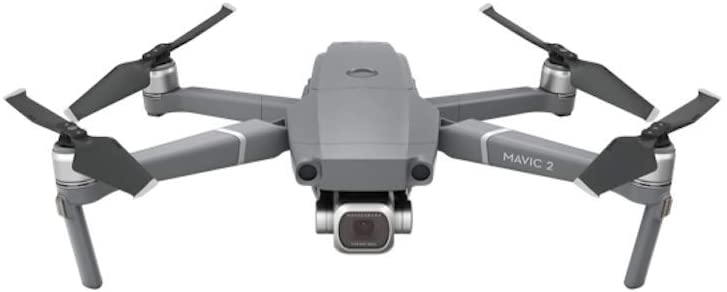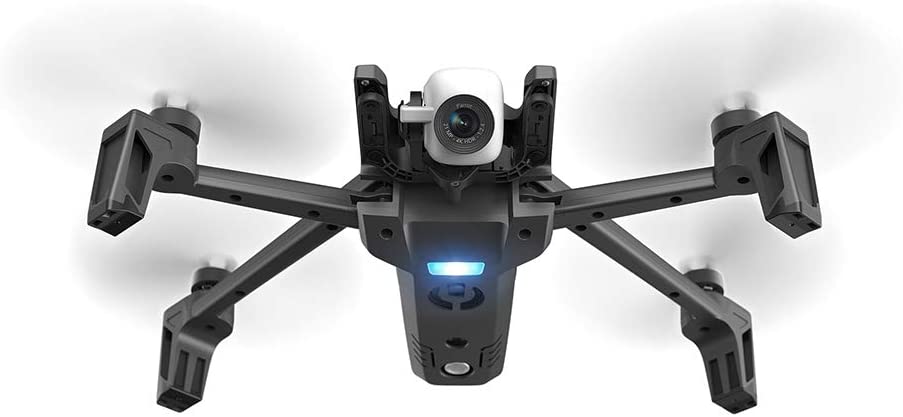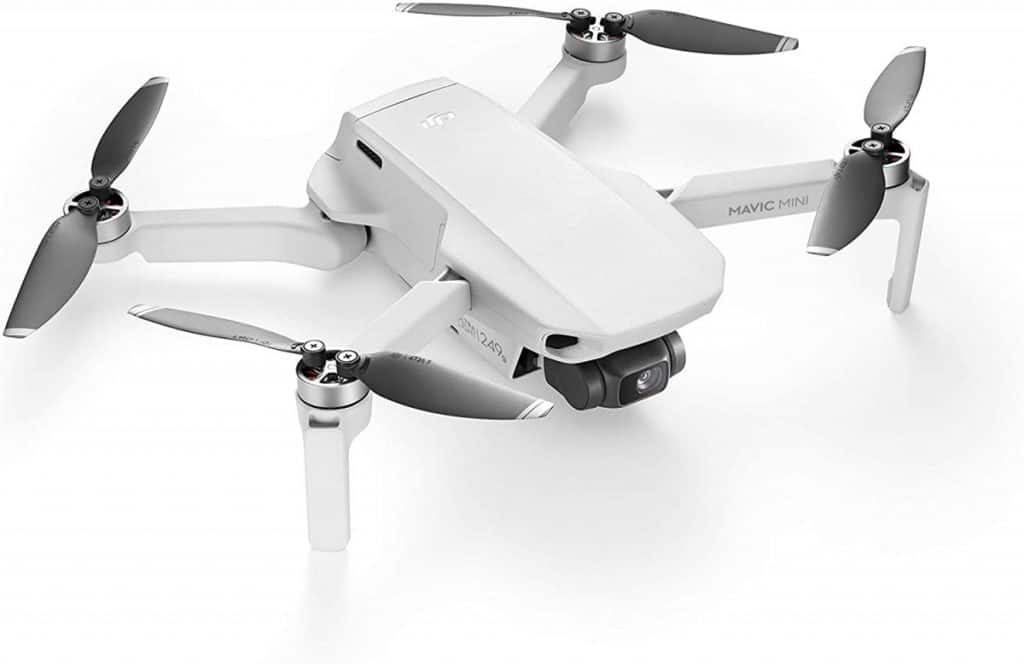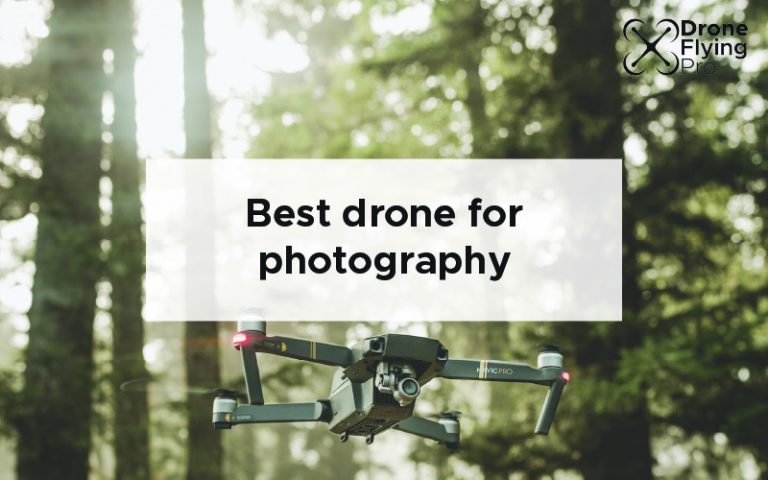It can be hard to choose the right drone for getting the best shots. There are so many different drones on the market that there is bound to be a bit of confusion when comparing the features of the cameras and the drones while balancing your bugdet. Here we will discus what makes the for the best drone for photography and the other options if you are a beginner or need to find something with your bugdet.
In a hurry? My top pick:
If you are in a bit of a hurry there is no going past the DJI Mavic 2 Pro as the best drone for photography in 2020! It has all of the best features and takes amazing photos straight out of the box!
DJI Mavic 2 Pro

This drone is the perfect camera and addition to your kit. If you are thinking about buying a drone camera and want lost and lots of room to expand your creative freedom – this really should be the drone you buy! The drone takes amazing pictures straght out of the box and you’ll learn how to use each one of the advanced camera options as you get more and more comforatable flying and operating the drone.
This thing is by far the best drone for photography!
Pros
+ 31-min Max. Flight Time
+ Hasselblad Camera
+ 10 km 1080p
Video Transmission
Cons
~ Users report a flight time of 21 minutes
~ Larger than other drones in the range so not as portable
There are many different types of drones that are capable of recording video and taking photographs. The best one for you will almost certainly depend on the use case that you have. If you are a professional photographer and want to include drone shots in to your service offering then you will have to look at the top end range of drone progucts. If, however, you are on a tighter budget and want something capable but without the expense – there are plenty of good options for you.
Here we will look at every single option starting from what drones photographers should use and the features that you should most care about when choosing a drone for photography.
What drones do photographers use?
If taking photos is the main reason that you are buying a drone the one thing you should care about is the specs of the camera. This includes the lens, sensor, ISO range, shutter speed and the different photography modes that you will get with the camera.
Let’s take a look at the most important features that you should care about…
All about the camera
Drone camera technology has become smaller and so much more affordable in recent years. The miniaturization of the electronics means that they are much lighter (so drones can carry them for extended periods of time). Here are some of the most important factors of each of the components of a drone camera, starting with the lens:
Lens
When we talk about the lens we must address all of these components:
- Field of view: expressed in degrees and tells you how wide the drone is able to capture an image.
- 35 mm format equivalent: The term 35 mm equivalent focal length is a comparison of the field of view seen through a digital camera lens compared to the field of view produced by the older 35 mm film cameras.
- Aperature: Also known as f-stops and controls how much light gets into the sensor and the depth of feild.
- Shooting range: will tell you how close and far away you are able to focus on an object (expressed in meters and to inflinity)
Each different camera on a drone will have a different array of values for each of the above. Drones typically are not used for portrait or other close up shots so manufacturers make a lens that is suitable for long range focusing with a wide field of view for those awesome landscape shots!
Sensor
The sensor is where light lands after it passes through the lens. This is the part of the camera that turns the light into an electronic signal so that it can be processed and turned into a digital image. Here are the most important parts that you should pay close attention to:
- Sensor type
- CMOS – Complementary metal-oxide semiconductor. Includes solid-state circuitry at each and every photosite, and can manipulate the data for each pixel right in the sensor. The CMOS sensor can respond to lighting conditions in ways that a CCD can’t.
- CCD – Charged-coupled device. Captures photons (light particles) as electrical charges in each photosite (a light-sensitive area that represents a pixel). After exposure, the charges are moved off the chip to an amplifier located in one corner of the sensor.
- Effective pixels – this tells you how many pixels can respond to the incoming light and correlates with the maximum resolution of the image.
Most new camera have a CMOS type of sensor as they have better imaging processing capability. Even the Mavic Mini (DJI’s entry level drone) has this type of sensor. The number of effective pixels and the quality capable from each camera is related to price. When you are buying a more expensive drone you will always get a better camera included. That is, until you get to the professional level drones that have interchangeable cameras and sensors.
ISO range
The ISO range tells you how sensitive the sensor is to light. Low numbers require lots of light entering the camera and result in a better image. Higher settings are required when there is less light entering the camera and result in a grainy and noisy image.
ISO ranges typically start at 100 and go upwards to 12800 when operating the camera in manual mode. It’s always best to use the lowest ISO range possible and increase the amount of light entering the camera. If you are dealing with a really bright environment you should use neutral density filters (NDFs) that are like sunglasses for your camera.
Shutter speed
The shutter speed of a camera is the length of time that the camera allows light to touch the sensor. In short, it is how long your drone camera spends taking a photo.
When you use a long shutter speed the first effect that you encounter is motion blur. Motion blur can be used creatively to give a sense of movement and excitement to an image.
When the shutter speed is short it is able to “freeze” fast moving objects in place. This requires a lot more light to enter the camera as the sensor is exposed to light for only a short period of time.
The shutter speed can be anywhere from 8 seconds (lots of blur) to 1/8000 of a second (very sharp clear image). It’ll take a while for you to get a sense of what sorts of shutter speed you need to get the desired effect or creative angle that you want. Getting a drone with a longer flight time will also take the time pressure off and allow for lots of variations of the settings to capture the perfect shot.
Photography modes
One of the last important factors of drones for photography is the different photography modes that you can use. This is starting to get very technical and for most people this will not need to factor into their decision making. As an example of the different photography modes here is what the DJI Mavic 2 Pro offers:
- Single shot: will take a single shot and it what most of us are used to with a camera.
- Burst shooting: will take 3 – 5 quick-fire images so you can select the best one.
- Auto Exposure Bracketing (AEB): The camera will choose one exposure (based upon what its metering thinks is correct) and then it will take one other shot on either side of this best guess (one over exposed and one underexposed).
- Interval: Will take an image every so often as the settings dictate. Evert 2 – 60 seconds.
- RAW: A RAW image offers very little processing from the image sensor. The camera saves the settings but does not process the image. There is much more freedom to edit the image but the file size can be 2 – 6 times larger than the processed version.
Taking a moment to think about the sorts of things you will shoot and how you’ll best be able to use these modes will be the best thing you can do.
Top three drones for photographers
The top three drones for photographers are listed here with the best one shown at the top of this article. The top there are:
| Drone | Why it is in the list | Link to current price |
|---|---|---|
| DJI Mavic 2 Pro + Zoom | This drone has it all! 4K slow-mo camera and amazing stability. Expensive – but worth every cent for serious photographers. | Check price on Amazon |
| Parrot ANAFI Work Drone | This is the low cost option that will do almost anything you need it to do. An under-rated drone that will surprise you with the advanced features it has – like 3-times zoom! | Check price on Amazon |
| DJI Mavic Air 2 | Very inexpensive drone which has every thing you need for taking amzing photographs. A portable option for those wanting to take their drone everywhere with them! | Check price on Amazon |
Let’s take a look at all three of these amazing drone options for photographers and give them a once over. Starting with the first one in the list. This is the full review of the DJI Mavic 2 Pro:
DJI Mavic 2 Pro + Zoom

This drone is the perfect camera and addition to your kit. If you are thinking about buying a drone camera and want lost and lots of room to expand your creative freedom – this really should be the drone you buy! The drone takes amazing pictures straght out of the box and you’ll learn how to use each one of the advanced camera options as you get more and more comforatable flying and operating the drone.
The camera includes:
- 1-inch CMOS Sensor – an active sensing area four times more effective than the original Mavic Pro. The large sensor also means better performance in low-light environments with a more extensive ISO range.
- 10-bit Dlog-M Color Profile – higher dynamic range for more flexibility in the grading room. The system records over 1 billion colors (compared to the 16 million colors from traditional 8-bit color coding technologies) and retains more in-depth details in both highlights and shadows.
- Adjustable Aperture – The f/2.8-f/11 adjustable aperture delivers outstanding image quality both in high and low-light environments.
In high winds the gimbal is still able to smooth out the footage and is perfect for the consumer and the professional that needs to get super high quality footage. It’s not just the camera and the gimbal that are awesome the drone packs a punch too:
- Weight – 907g
- Dimensions
- Folded: 214×91×84 mm (length×width×height)
- Unfolded: 322×242×84 mm (length×width×height)
- 31 minutes flight time
- Max wind-speed resistance – 29 – 38 kph
- 8 GB internal storage
- Max speed – 72 kph
This thing is by far the best drone for photography!
Pros
+ 31-min Max. Flight Time
+ Hasselblad Camera
+ 10 km 1080p
Video Transmission
Cons
~ Users report a flight time of 21 minutes
~ Larger than other drones in the range so not as portable
Parrot ANAFI Work Drone

The Parot Anafi is an underrated drone that is capable of many awesome things and gives the DJI drones a run for their money. The Work bundle includes:
- 1 Parrot ANAFI drone
- 4 smart batteries
- 1 Parrot Skycontroller 3
- 1 compact shoulder bag
- 1 16 GB SD card
- USB-A to USB-C cables
- 8 additional propeller blades
- 1 multi-port USB charger
- 1 mounting tool
- One-year subscription to Pix4Dcloud
This is more than enough to get the most serious photographer started and ready for whatever each flight has in store for them! These are the features that this drone comes with:
- Pro drone with 4K camera: Its 4K HDR/ 21 MP Camera captures high-resolution aerial images with a unique 180° orientation, enabling you to inspect, monitor and film difficult-to-access areas. Its zoom allows to keep a safe distance during inspection work without loss of quality. The hybrid 3-axis image stabilization delivers Ultra-Stable video and photos.
- Always ready to take off: the 4K anafi UAV is the efficient solution for all your needs. With a combined flight time of 4×25 min, a mobile USB c-type charge (to charge your batteries between 2 flights) and a multi-port USB charger (to charge your batteries simultaneously), your drone is always ready to fly in no time. Its perfect stability in winds of up to 50km/H and its silent flight are two additional advantages for successful videos.
- Easy operation: easy to carry in its compact shoulder bag, The drone can be operated intuitively even in difficult areas with the freeflight 6 mobile application. Automatic flight Modes such as Flightplan (not included, in-App purchase) will allow you to perform reconnaissance missions. Take advantage of smart RTH (return home) and geofence (punctual restriction of the drone At altitude and distance) functions for secure flights.
- 3D MODELLING: Create 3D models and take precise measurements of distances and surfaces: Anafi Work includes a one-year subscription to Pix4Dmodel to create 3D models easily and quickly on your computer (access Pix4Dmodel via the myPBS coupon included in the pack). The drone is also compatible with Pix4Dcapture (free application) which allows you to capture stand-alone images optimised for the creation of your 3D models.
Pros
+ Very portable
+ 3 times zoom
+ 4K camera
Cons
~ Issues in lower light
~ No collision avoidance
DJI Mavic Air 2

I love my Mavic Air and was happy when DJI desided to upgrade the drone. It seems like they have done it in all of the right ways!. The Mavic Air 2 takes power and portability to the next level, offering advanced features in a compact package. It has a range of intelligent shooting functions and excellent image quality put aerial masterpieces within reach.
The camera includes:
- 1/2-inch CMOS sensor: it has smooth 4K/60fps video. The D-Cinelike flat color profile retains more information for post-processing. The HEVC (H.265) video codec records more image information, uses less storage, and preserves the dynamic range and detail of your footage, ensuring next-level content.
- 8K Hyperlapse: this will allow you to simply warp time and space for especially stunning footage.
this is an inexpensive and ultra portable drone that I think you’d be silly not to consider if you want to be a little more budget consious.
- Weight – 570 g
- Dimensions
- Folded: 180×97×74 mm (Length×Width×Height)
- Unfolded: 183×253×77 mm (Length×Width×Height)
- 34 minutes max flight time
- Max wind-speed resistance – 8.5-10.5 m/s
- 8 GB internal storage
- Max speed – 19 m/s
This is a great little drone and it will satisfy most hobby photographers easily!
- Up Your Game: The Mavic Air 2 camera drone takes power and portability to the next level. It combines a powerful camera with intelligent shooting modes for stunning results.
- Next-Level Content: Capture impressive 48MP photos with a 1/2-inch CMOS sensor while the 3-axis gimbal provides 4K/60fps video.
- Improved Flight: An impressive flight time of up to 34 minutes allows you to pull off epic, fast-paced shots.
- Intelligent Tracking: Mavic Air 2 features intuitive shooting functions that make aerial photography easier than ever.
- Video capture resolution: 4K HD
Pros
+ Very portable
+ Cheaper option than Pro
+ Great intelligent flight modes
What is the best camera drone for beginners?
The best camera drone for beginners should always be a balance between price and function. Its easy to look at the best drone in the market and assume that you need to buy the b est and most up todate drone. That is not the case!
When you are buying a drone for a beginner you need to factor in the things that are most important for you!
Buying a drone can get quite expensive! You’ve made the right decision to buy a second hand drone if this is your first drone and you want to save a little bit of money. There are some things you need to do first before choosing a second hand drone. Deciding which one you need instead of which one you want is very important distinction to make. Ask yourself WHY you are buying a drone and make a list of those things. Check in with those things if you start getting confused and overwhelmed by the options.
Check out my really detailed post on how to buy a drone which will talk you through the options available to you. In short you need to ask yourself these simple questions:
- What features do you need from your drone? Camera quality, flight time etc.
- How much money do you want to spend? Be strict with your money and choose a drone you can afford.
- What features are you willing to be flexible on? Being a second hand drone there will have to be a little give and take.
- How much are spare parts? You’ll probably end up need things like spare batteries and propellers. How much are they?
The objective of this step is to make the decision as objective as possible. Marketers say “people buy on emotion and justify it with logic”, we want to make sure that you are as clinical as possible before making this purchase!
Buy a second hand drone!
For a full rundown on how to buy a second hand drone with a downloadable checklist check out my other post – here.
Essentially, there are a load of great bargains to be had if you are a beginner and not sure if this hobby will be something that you want to continue with. I’ve made a checklist that you should go and download before you settle on a second hand drone. check it out by clicking the image below.

Besides looking for a secondhand drone you may want to consider buying a drone that is new but at the beginner range of camera drones. For that I recommend purchasing the Mavic Mini – Don’t be fooled by the price or the size – it may be just the beginner camera drone you have been looking for!
The Mavic Mini
The Mavic Mini is the perfect beginner drone for hobbyists that don’t want to spend a fortune on a drone – anything above this can start to get pretty expensive!

If you are new to the drone world the Mavic mini is the perfect place to start for these reasons:
- It’s so small and light that you can take it anywhere with you! – Having to double guess taking your drone with you can make you not fly a drone at all. Making it a quick grab and go item will improve the odds that you’ll actually get around to flying it regularly!
- It’s really inexpensive – you don’t need to spend thousands on a drone to get the drone experience. This has a great app and flying experience that you can get everything you want from a drone experience without breaking the bank.
- 30 minutes of flight time – this is as long as you’d get from much more expensive drones. This is long enough to have a play around and grab the shots you want to get!
- GPS auto home landing – I love that these DJI drones auto land. They all have a “return to home” function that gives the drone pilot such incredible peace of mind. Phone dies? No problem, the drone will return to its take-off spot safely!
- Introduction to DJI drones – pretty much every drone that I recommend is a DJI drone. This is because they listen to their audience and make drones that are a pleasure to fly. I very rarely like to spruik one company but until a better drone company arrives on the market DJI has my vote – nearly every time.
Is a Drone worth it for photography?
When we consider if a drone is worth it we need to factor in why you are using the drone and what features you need it to have to perform the tasks you want it to perform. To help you deside in general, check out my YouTube video on whether or not drones are worth it in general:
For photography purposes you need to ask yourself these questions:
- Does the camera have the specs that I need? Be honest with yourself about the sorts of things you will be taking pictures of when you get the drone. Sure everyone want to have the best drone in the market – but will a less expensive drone also get you want to need. In other words – do you really need the 4K?
- What is my budget? There’s nothing that will kill a good purchase quickler than over-reaching in terms of your budget and what you are willing to pay. Keep it under budget!
- Have I got the desire to use it often? Do you have clients that reguarly ask for drone shots? Or do you get out in nature often and want to capture some fun things? If you have space in your life for a drone for photography – it can be a great purchase!
- Will I use it to add to my photography skills or start a new hobby? If you are already into photography and enjoy the “game” then adding a drone ito the mix may keep it fresh and interesting for you! If, on the other hand, it is just something that you have just started – a drone may not be the best purchase. There are plenty of cheaper and easier ways to fist dip your toe into photography.




